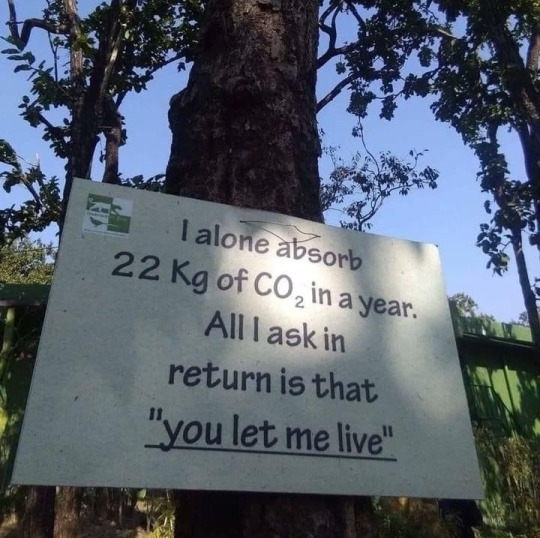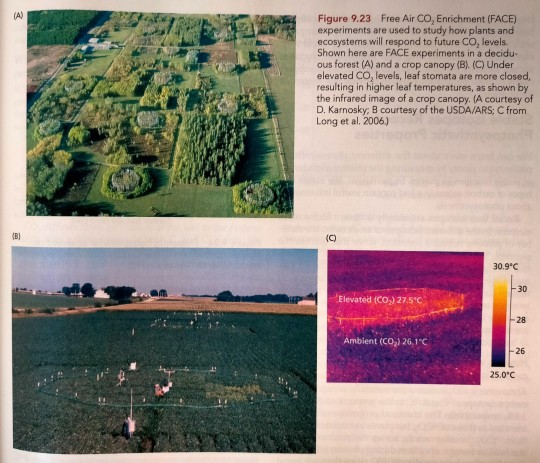#transpiration
Text
Transportation system, 🛣️ !.
Atlanta, Georgia, United States 🇺🇸 !.
#Roads#Atlanta#Georgia#United States 🇺🇸 !.#downfall#downfalldestiny#life#Transpiration#System#Cars#Buildings#Magic#Modern
54 notes
·
View notes
Text
Just let me be, says the Treekind to the Humankind. Let me be your keeper, brother.

View On WordPress
#bees#carbon sink#clean air#climate change#co2 emissions#deserts#food security#forestation#oxygen#sustainable development#transpiration#trees#water resources
7 notes
·
View notes
Text

26 notes
·
View notes
Text
What is the Significance of Transpiration in Plants?
Transpiration is the process by which plants absorb water through their roots and release water vapor into the atmosphere through small openings in their leaves called stomata. This essential function plays a crucial role in the plant’s overall health and survival.
In this article, we have looked at the complete process of Transpiration in plants, its classification, and its significance.
What is Transpiration in Plants?
Transpiration is the movement of water through a plant and its evaporation from aerial parts, primarily from leaves but also from stems and flowers. It helps in the regulation of temperature, nutrient uptake, and the transport of water and minerals within the plant.
This process is essential for plants to absorb nutrients and minerals from the soil. It also helps in regulating the temperature of the plant and maintaining its shape and structure.
Types of Transpiration
Three main types of transpiration occur in plants:
Stomatal Transpiration
Stomatal transpiration occurs through the stomata, which are tiny pores present on the surface of leaves. These pores open and close to regulate the exchange of gases and water vapor between the plant and the surrounding environment. Stomatal transpiration accounts for most water loss in plants.
Lenticular Transpiration
Lenticular transpiration refers to the loss of water vapor through specialized structures called lenticels. Lenticels are small, corky pores found on the stems and woody tissues of plants. They allow for gas exchange, including water vapor, to occur.
Cuticular Transpiration
Cuticular transpiration involves the diffusion of water vapor through the cuticle, which is a waxy, waterproof layer covering the outer surface of leaves and stems. While cuticular transpiration accounts for a smaller portion of total transpiration, it plays a crucial role in reducing water loss and protecting the plant from dehydration.
Important Factors Affecting Transpiration in Plants
Many factors affect the process of transpiration in plants, few of them are listed below,
Environmental Factors: Factors such as temperature, humidity, wind speed, and light intensity influence the rate of transpiration in plants.
Plant Factors: The size, age, species, and health of the plant affect its transpiration rate.
Soil Factors: Soil moisture content, nutrient levels, and root health impact the plant’s water uptake and transpiration.
Significance of Transpiration in Plants
Transpiration plays a vital role in the overall health and function of plants by:
Water Transport: Transpiration creates a negative pressure gradient in the xylem, facilitating the movement of water and dissolved nutrients from the roots to the shoots.
Cooling Mechanism: Transpiration helps regulate leaf temperature by dissipating heat through water evaporation, preventing overheating.
Nutrient Uptake: Transpiration aids in the uptake of essential nutrients from the soil by creating a transpiration stream, pulling water and nutrients into the roots.
Photosynthesis: Transpiration facilitates the exchange of carbon dioxide required for photosynthesis, enabling the synthesis of sugars and other organic compounds vital for plant growth.
Understanding the different types of transpiration and the factors affecting it is essential for optimizing plant growth and health. By recognizing the significance of transpiration, we can better appreciate the intricate mechanisms that plants have developed to survive in diverse environments. For personalised online tuition, Tutoroot offers the best option. Our biology tuition sessions can help clarify any doubts you have about these concepts. Click here to book a FREE DEMO session.
0 notes
Text
"I love this time of year. Where the plant life has not hall died yet and are still holding onto their green, and the air temperature is cold enough that in the sunlight...you can see the Earth breathing."
0 notes
Text
youtube
#organe#yeux#pupille#dilatation#contraction#salive#diminution#augmentation#peau#transpiration#sèche#respiration#coeur#accélération#ralentissement#dgiestion#inhibition#activation#glande#surrénale#sécrétion#Youtube
0 notes
Text

kiss of the divine
#vashwood#vash the stampede#nicholas d wolfwood#trigun#trigun maximum#ruporas art#i will always love u vol 8… Obviously i was a vw lover even thru stampede alone but i think this chapter#really set it in stone for me 😭 aughhh wolfwood pleading to god and vash answers - that allll transpiring after wolfwood risked his life#to go Save vash in the first place - he fears death twice as much as anyone else. he is all the reason i need to fight#LIKEEEEE 🥲🥲🥲🥲 I drew this because i wanted them to kiss in my fucked up idealized world but truly canon did crazy work#in establishing their undeniable mutual trust and love already
4K notes
·
View notes
Text

Historic garden study to help manage vital urban green spaces
A historic Aberdeen garden could play an important role in the development of urban green spaces, following a study that showed how different types of vegetation can be used to best manage these vital areas.
The study, which took place at the Cruickshank Botanic Garden at the University of Aberdeen’s Old Aberdeen campus, found that selecting the right type of vegetation when planning urban green spaces can play an important role in creating a flourishing local ecosystem while protecting our climate.
Urban green spaces are seen as vital to building resilience to both climate and land use changes, as well as helping achieve government targets aiming to increase green space provision to communities.
However, relatively little is known about how these should be designed to make the most of specific hydrological ecosystem services that help build resilience.
The study, led by a team from the University’s School of Geosciences, along with international collaborators, and funded by the Leverhulme Trust, analysed plots at the Cruickshank Botanic Gardens over one growing season to see how different vegetation types might affect what happened to rainfall.
They found that the use of grassland encouraged greater groundwater recharge, while conifers increased transpiration – the process where plant roots absorb water and then release it as vapour through leaves, one of the major sources of water being released into the atmosphere, which can help to cool the local air.
The results of the study, which was one of the first of its type in such an environment, is published in the journal Environmental Monitoring and Assessment
Lead author Dr Jamie Lee Stevenson said that urban green spaces are increasingly seen as important in building resilience to both climate and land use changes, making their study a potentially important resource for future green space design and planning.
He said: “The choice of urban green space vegetation is important in maximising specific ecosystem services such as groundwater recharge and the cooling of local air temperatures which can help mitigate and improve resilience against climate and land use change.
“In this study we used an array of sensors and developed a new modelling approach, comparing vegetation types at a plot scale, to see clearly how different vegetation types compare in terms of the derived ecosystem services they provide.
“The results provide clear, quantifiable, evidence of functional differences in a previously unstudied area that could be used by those managing urban green spaces for climate and land use change resilience. It also provides a sound basis for further studies in other urban environments and locations.”
0 notes
Text
Продовольственная безопасность и маловодье. 💧Groasis💧 Сентябрьская распродажа 🧡🌳🧡 Казахстан.
Скидки только на сентябрь 🧡🌳🧡
Вниманию ведомств и организаций, занимающихся продовольственной и экологической безопасностью в Республике Казахстан8 сентября 2023 г.
Существует ли в Казахстане проблема нехватки водных ресурсов и низкого содержания кислорода в атмосфере, и как она решается?
Экологическая обстановка в Казахстане зависит от водной и экологической политики сопредельных государств…

View On WordPress
#afforestation#anti-desertification#bees#carbon sink#clean air#climate change#co2 emissions#deserts#food security#forestation#Groasis#oxygen#sales#September discounts#sustainable development#transpiration#trees#water resources#Waterboxx
0 notes
Text
Figure 9.23 shows FACE experiments in three different vegetation types. (...) As a direct consequence of reduced transpiration, leaf temperatures are higher (at Figure 9.23C), which may feed back on basic mitochondrial respiration.

"Plant Physiology and Development" int'l 6e - Taiz, L., Zeiger, E., Møller, I.M., Murphy, A.
#book quotes#plant physiology and development#nonfiction#textbook#free air carbon dioxide enrichment#face#transpiration#mitochondria#stomata#vegetation#experimentation#carbon dioxide
0 notes
Text
What is Transpiration?
Transpiration is the movement of water through a plant and its evaporation from aerial parts, primarily from leaves but also from stems and flowers. It helps in the regulation of temperature, nutrient uptake, and the transport of water and minerals within the plant. This process is essential for plants to absorb nutrients and minerals from the soil. It also helps in regulating the temperature of the plant and maintaining its shape and structure. Enroll now at Tutoroot.
0 notes
Text
STOP HYPERHIDROSE et HYPNOSE? Hypnose DCS unique au monde

View On WordPress
0 notes

